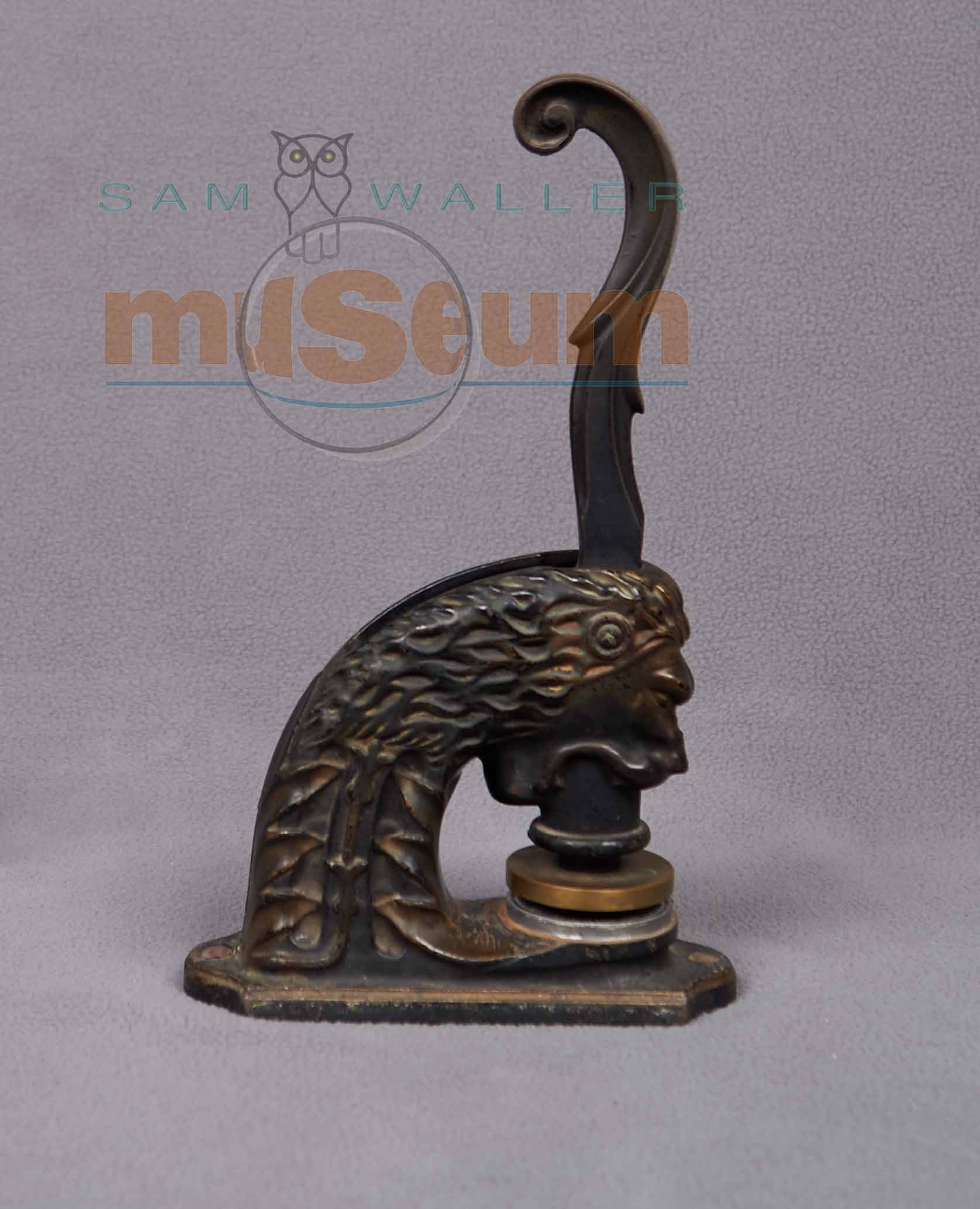This collections item is a notary stamp or an embossed seal. The base of the apparatus appears to be a lion’s head, which eventually rises up so that it’s mouth appears to be holding the actual embossed seal. This seal reads “Sherriff’s Office The Pas Manitoba Northern Judicial District” and was probably used in the Courthouse and Community Building where the Sam Waller Museum is now housed. These notary stamps are used by notaries, public officials who authorise or authenticate various documents for the public. Notaries were employed in ancient Egypt and Rome and are still commonly employed across many different countries around the world though notaries roles, authority, and training may vary greatly depending on the region.
Notary stamps were and are often used to prove that a document is genuine and authentic due to the embossed seal not showing up properly in scans and photocopies. Notary stamps follow a long tradition of trying to prevent the falsification of documents. Older examples include dripping hot wax onto a letter and then pressing a seal into the hot wax, or something as simple as drawing lines at the end of a letter to prevent anyone else adding anything else to the letter; for example, as Elizabeth I did in the famous Tide Letter to her sister Mary I. The letter is named the Tide Letter as Elizabeth I, then a princess, wrote it very slowly, only finishing the letter after the tide on the River Thames had risen. This prevented her imprisonment in the Tower of London for one more day as entrance to the tower was often gained through narrow gates in the river through which boats could only enter at low tide. Modern examples are watermarks in paper and “read-only” electronic documents. Of course, notary stamps or embossing can still be used today to denote authenticity.
This notary stamp was donated to the Sam Waller Museum in 2018.


